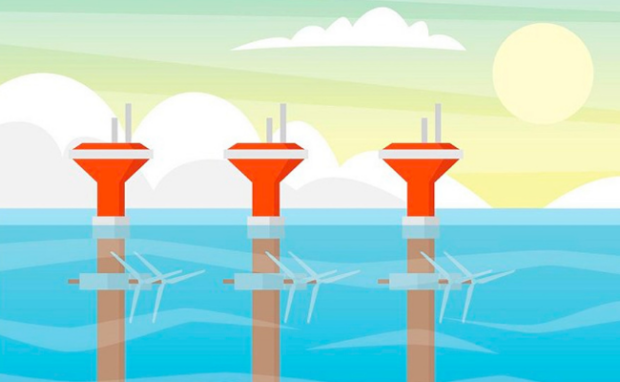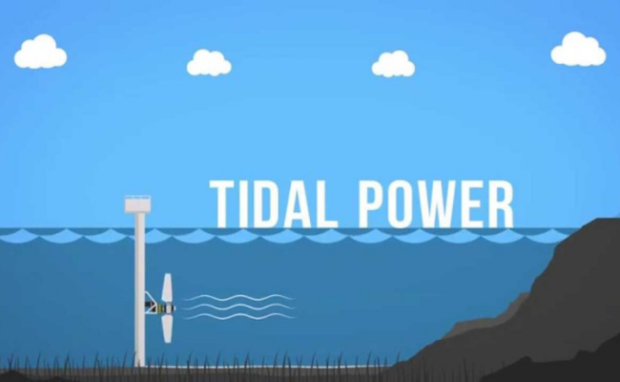Tidal turbine converts ocean’s ebb and flow into energy
A team of Scottish engineers created a new tidal turbine blade that may reduce the cost of converting ocean currents into energy. The University of Edinburgh experts said their invention “reduces the amount of materials necessary [by] bringing down the weight, volume, and crucially, the cost of manufacturing the blade.
The increased awareness of fossil fuel effects on climate change has prompted many to explore renewable energy instead. Nowadays, green energy steadily expands into the mainstream as fossil fuels are on their way out. Tidal energy could help feed this transition, and the new turbine blades could make it more practical for everyone worldwide.
This article will discuss how the researchers built their new tidal energy component. Later, I will explain how tidal energy works because it is a lesser-known form of renewable energy.
How did they create this tidal energy structure?

FastBlade, the world’s first rapid testing facility for tidal turbine blades, created the turbine blades. They manufactured it with Tocardot Turbines for the tidal energy technology company QED Naval.
It is a part of the European Tidal Stream Industry Energizer Project or TIGER. Interesting Engineering said the team used monolithic construction never before used in blade production.
It removes the weaker adhesive joints in conventional rotor blades. As a result, the blades are more resistant to tidal stream conditions than their traditional counterparts. Dr. Eddie McCarthy, FastBlade’s leader, said in a statement:
“We have found a faster, cheaper route to manufacture than the usual tidal blade fabrication process, based on an altered design – we hope the combination of improved design and optimized manufacturing process will contribute to reducing the levelized cost of energy (LCOE) of tidal stream energy, with the long term goal of matching LCOE of offshore wind.”
You may also like: ChatGPT energy consumption study sparks debate
The University of Edinburgh website shared a statement from Jeremy Smith, QED Naval’s managing director. “We are delighted to be working with the University of Edinburgh on this next generation of tidal turbine blades, which will help bring down the cost of tidal installations,” he said.
“We have deliberately demonstrated the design tools, processes, and build method on our smaller T1 blade design, using a 6.3m rotor diameter, but we will be pulling these through into our T3 blades up to 14m rotor diameter. This work, and its part in the EU Interreg TIGER Project, helps showcase cost savings and the benefits of tidal energy.”
Ian Hatch from Edinburgh Innovations added, “A recent report found that tidal stream energy could provide more than 6GW of energy to the UK by 2050, providing a significant baseline power source for our future electricity grid.”
How does tidal energy work?

As the name suggests, tidal energy harnesses the power of ocean currents to make electricity. It is similar to hydroelectric power, which is a more commonly known form of energy.
You place a turbine in a body of moving water. Its movement spins the turbine, which turns that mechanical energy into electricity. Nowadays, many are exploring this energy source because it doesn’t run out.
The tides will continue as the Sun and the Moon pull our oceans with their gravitational pulls. Also, it is easy to predict when the tides will rise and fall.
The general rule of thumb is high tides emerge as the Moon waxes or turns into a Full Moon. On the other hand, low tides occur as the Full Moon wanes.
Another great benefit is its higher output than wind energy. Solar Reviews said water is almost 800 times denser than air, allowing tidal turbines to generate more energy than wind turbines.
Of course, tidal energy doesn’t emit greenhouse gases, making it a promising eco-friendly choice. On the other hand, this renewable source has its drawbacks.
The biggest flaw is the high upfront costs. You usually need a higher budget to create high-quality turbines that can withstand high water pressure and movement.
You may also like: Desalination device less than the cost of tap water
The FastBlade project may have solved this issue with its sturdier turbine blades. However, it may still require costly tidal barrages, which are low-walled dams that support turbines.
Tidal energy collection is only possible in specific locations. You must put turbines on coastlines where the difference in height between the low and high tide is significant enough to spin them.
We can predict when tides rise and fall, but that doesn’t help guarantee constant power production. For example, tides will generate power at noon if they often rise at that time.
Conclusion
Scottish researchers created a tidal turbine blade sturdier than previous models. As a result, it could make tidal energy a more viable option for the United Kingdom.
The country’s energy needs continue to rise, so tidal energy could help meet them. Soon, more nations may adopt this energy source with enough research and development.
Nevertheless, fossil fuels are falling out of favor as more people use renewables. Learn how this trend may shape your daily life, and see the other digital updates at Inquirer Tech.